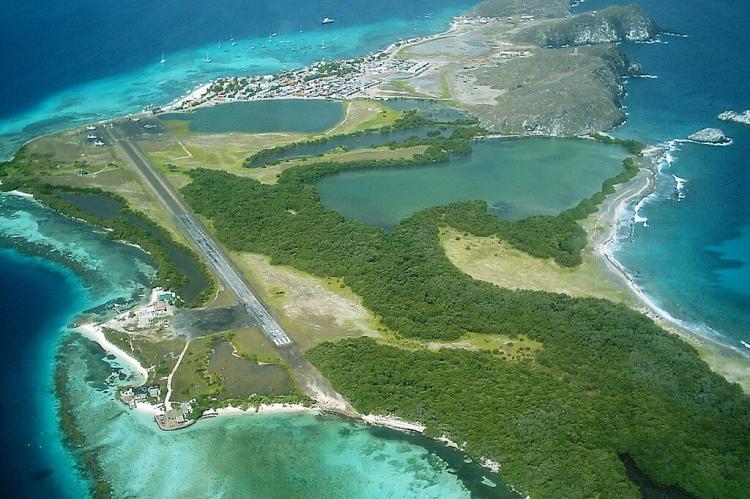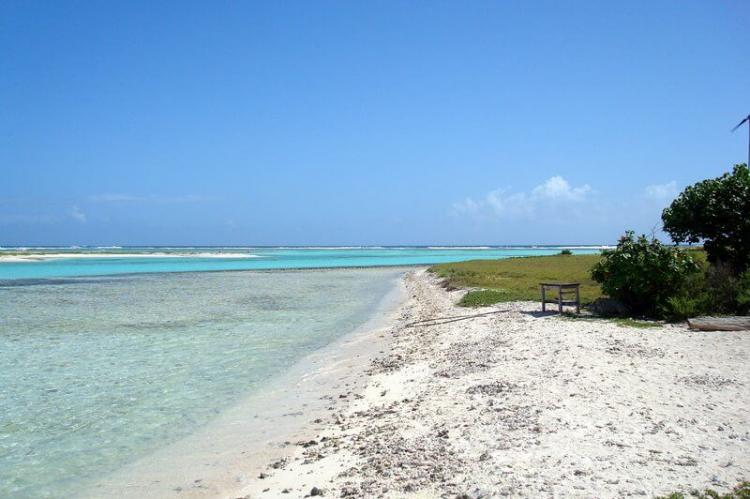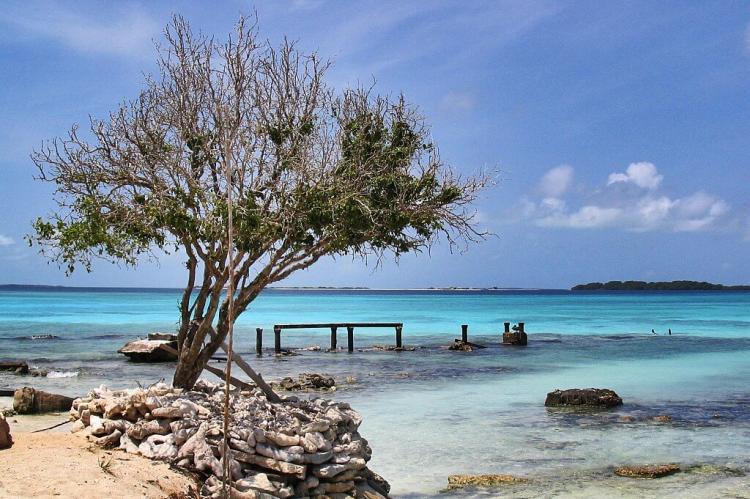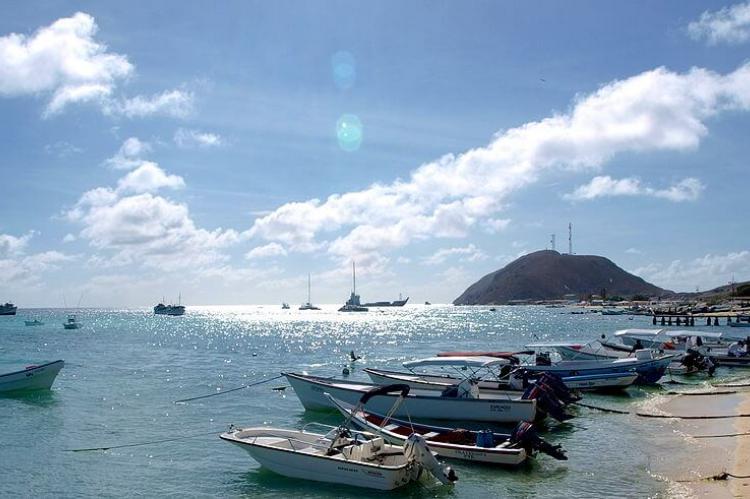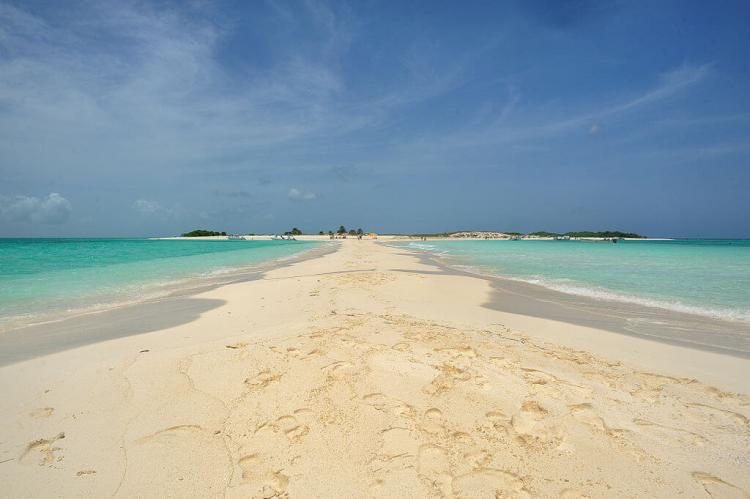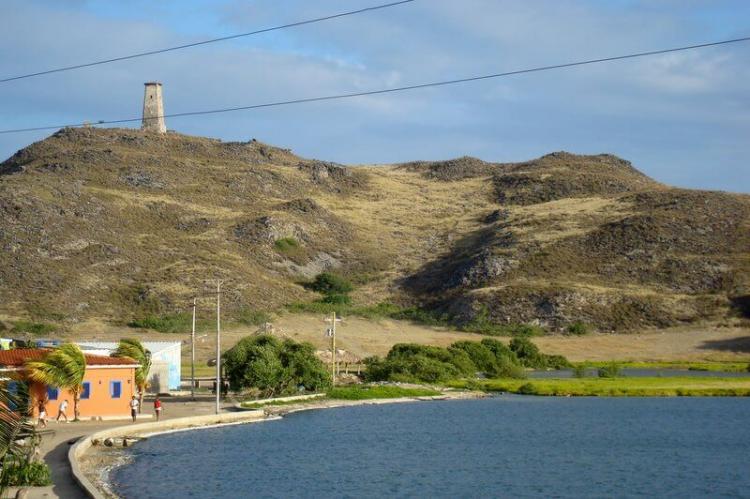Los Roques: Archipelago and National Park (Venezuela)
Los Roques is an archipelago off the northern coast of Venezuela with over 300 small islands, cays and sand banks that ring a central shallow lagoon. Los Roques Archipelago National Park was created to protect its marine ecosystem of coral reefs, mangroves and seagrass beds.
Los Roques
Los Roques is an archipelago of islands, cays and sand banks that ring a central shallow lagoon containing coral reefs and mangroves. It is located 130 km (80 mi) north of Venezuela's central coast in the Caribbean Sea. It is a Federal Dependency administered directly by officials appointed by Venezuela's central or federal government.
The archipelago is an extensive coral atoll that spans 36 km east to west and 24.6 km north to south. The atoll comprises 50 islands, about 292 keys and extensive coral reefs covering an area of 221,120 ha (546,400 acres). It is only 130 m (426 ft) above sea level at its highest point, but it can reach depths of 1,700 m (5,577 ft) at its deepest point.
Los Roques is sparsely populated, with approximately 1,500 permanent inhabitants, mainly on the island of Gran Roque; however, it receives about 70,000 visitors a year, many of them day-trippers from the mainland. Los Roques also attracts wealthy tourists, some of whom come in their yachts and anchor in the inner, protected shallow waters.
The major islands have an atoll structure with two external barriers formed by coral communities, an inner lagoon and sandy shallows. The main islands range in size from Cayo Grande (15.1 sq km (5.8 sq mi) to Gran Roque (1.7 sq km (0.66 sq mi). Other important islands are Francisqui, Nordisqui, Madrisqui, and Crasqui.
The climate in Los Roques is warm and dry. The average annual temperature is 28 °C (82 °F), with an average yearly rainfall of 250 mm (~10 in). The warmest months are September and October.
Los Roques was designated as a National Park in 1972, and the archipelago was declared a Ramsar site in 1996 due to its importance as a biodiversity and food resource reservoir.
Gran Roque Island produces 90% of the lobster consumed in Venezuela. About 300 fishermen take up temporary island residences during the fishing season. Snappers, including yellow-tailed snappers (Lutjanidae) and groupers (Escombridae and Serranidae), are of high economic value.
Historically, fishing has been the primary economic activity in the archipelago but has been strictly regulated since the creation of the National Park.
{"preview_thumbnail":"/sites/default/files/styles/video_embed_wysiwyg_preview/public/video_thumbnails/150554344.jpg?itok=MwM8heHD","video_url":"https://vimeo.com/150554344","settings":{"responsive":1,"width":"854","height":"480","autoplay":0},"settings_summary":["Embedded Video (Responsive)."]}
Los Roques Archipelago National Park
Los Roques Archipelago National Park was created in 1972 to protect its marine ecosystem dominated by coral reefs, mangroves and seagrass beds. It protects one of the highest-quality coral reefs in the Caribbean with respect to species diversity, area of live coverage and low incidence of disease.
The archipelago consists of 1,500 sq km (580 sq mi) of coral reefs, 42 coral cays surrounding a shallow central lagoon of 400 sq km (150 sq mi), two barrier reefs and 300 sandbanks, islands and cays.
Due to its privileged geographic location in the Caribbean Sea and the convergence of three highly diverse ecosystems (coral reefs, seagrass beds and mangrove communities), Los Roques Archipelago is considered a coastal marine paradise and is the most important reef formation in Venezuela as well as in the southern Caribbean Sea.
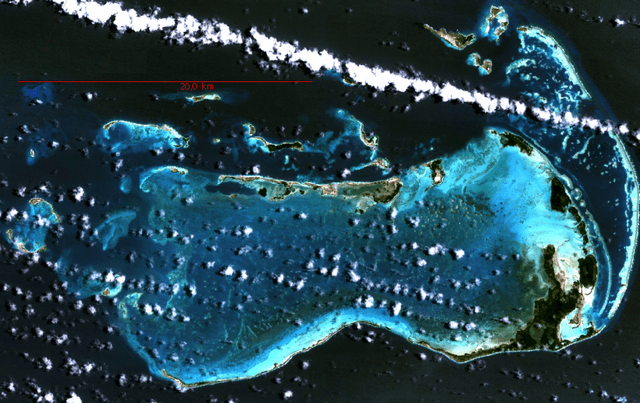
NASA WorldWind screenshot of Los Roques
Biodiversity
Los Roques harbors about 61 species of corals, 200 species of crustaceans, 140 species of mollusks, 45 species of echinoderms, 60 species of sponges and 280 species of fish. No native land mammals exist.
Four species of globally endangered sea turtles nest in Los Roques: the loggerhead turtle (Caretta caretta), the green turtle (Chelonia mydas), the leatherback turtle (Dermochelys coriacea), and the hawksbill turtle (Eretmochelys imbricata).
Other reptiles include the lizard Gonatodes vitattus roquensis, a subspecies endemic to the archipelago, and Cnemidophorus lemmiscatus nigricolor. This very abundant black lizard was first described with a specimen from Los Roques. Gynmnodactylus antillensis is a species endemic to leeward Caribbean islands reported only in Bonaire, Curacao, La Orchila, Las Aves and Los Roques.
About 92 bird species can be found in Los Roques, 50 of which are migratory and come from North America. Among the most attractive birds that nest annually in Los Roques are the brown pelican (Pelecanus occidentalis), two bobby species (Sula sula and S. leucogaster), the laughing gull (Larus atricilla), the common, least, and brindled tern (Sterna hirundo, S. antillarum, S. anaethetus), the brown noddy (Anous stolidus) and the lesser noddy (Anous minutus).
Flamingos (Phoenicopterus ruber) are also present in the park. A black-colored subspecies (Coereba flaverola lowii) of the common bananaquit is endemic to Los Roques. Also found are the yellow warbler (Dendroica petechia obscura) and the common ground dove (Columbina passerina tortugensis), which are subspecies endemic to the Venezuelan Caribbean Islands.
Approximately 38 plant species have been reported. Four mangrove species live in the park: red mangrove (Rhizophora mangle), black mangrove (Avicennia nitida), white mangrove (Laguncularia racemosa) and button-wood mangrove (Conocarpus erectus).
Also present are various halophilic plants like the sea purslane (Sesuvium portulacastrum and Sporobolus pyramidatus), three cypress species (Cyperus sp.) and many shrubs that include the saltwort (Batis maritima and Tournefortia gnaphalodes). A specimen from Los Roques was used to describe the grass Setaria submacrostachya to science.
The cacti Stenocereus griseus, Melocactus caesius, and Opuntia wentiana dominate areas that are high and exposed to winds. Thalassia testudinum seagrass beds mostly dominate shallow water zones with sandy bottoms, a species widely distributed in the Caribbean Sea.
